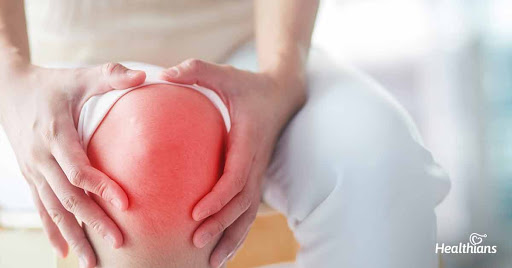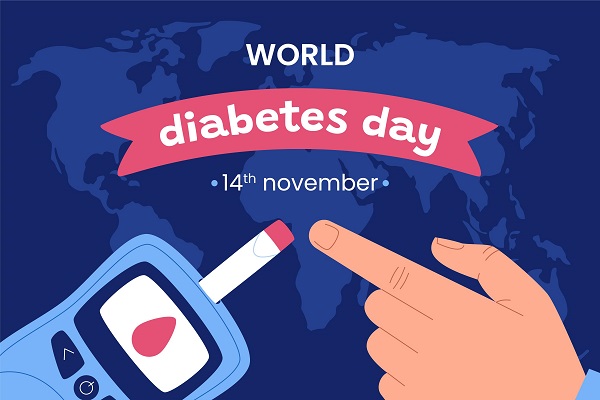Contributed by: Healthians Team
Rheumatoid arthritis is an autoimmune and chronic inflammatory disorder that causes chronic inflammation of joints including those in the hands, legs, knees, feet, shoulders, waist, hips, ankles, toes, and wrist. This autoimmune disorder occurs when the tissues of your body mistakenly attack your immune system. People with autoimmune disorders have immune cells and antibodies in their blood that attack their body tissues causing inflammation (swelling) in many joints at once. When rheumatoid affects your joints, the lining of the joints becomes swollen, causing injury to joint tissues.
This joint tissue injury can be long-lasting causing constant pain, stiffness, swelling, loss of function, lack of balance, and deformation. RA causes joint tissue injury on both sides of the body in your joints. This is how doctors distinguish RA from other forms of arthritis. Rheumatoid not only affects many joints but also affects the skin, eyes, blood nerves, and tissues of the body. When RA affects the tissues of the body, it causes problems in multiple organs even the heart, kidneys, and lungs.
RA can affect anyone, in any gender, but it has been found to affect people mostly in the age group of 40 and 60 yrs. RA has also been found to affect people below the age of 16 yrs also, in which case it is called juvenile rheumatoid arthritis. If RA is not managed or treated on time, it can permanently injure your joints and other tissues. It becomes easy to manage symptoms of RA effectively if it is detected in its early stages. So it is important to know the signs and symptoms of RA so that you can be better aware of the disease and learn to manage it effectively. When the symptoms get more serious they are known as flares and when you are able to manage RA effectively resulting in the symptoms reducing in magnitude, that stage is known as remission. Here are a few signs and symptoms of RA:
- Fatigue
- Lack of energy
- Loss of appetite
- Mild fever
- Pain in joints and muscles
- Redness and swelling in joints
- Joint tenderness and deformity
- Stiffness
- Limping
- Loss of joint function
- Anemia
- Fever
- Depression
These signs and symptoms come and go depending upon the severity of tissue inflammation. Signs and symptoms of RA occur in 2 stages: Flares and Remission. When your body tissues get damaged due to chronic inflammation, RA becomes active. Signs and symptoms start showing up and the return of RA is known as a flare. On the other hand, when the tissue inflammation falls, the RA becomes inactive. This stage is called the remission stage which usually occurs after effective treatment. The course of symptoms of RA may keep changing as well among individuals but the stages of flares and recession remain typical.
It is, therefore, necessary not to overlook the signs and symptoms even when they appear or disappear. Identifying your signs and symptoms early will help you and your healthcare provider better manage and treat the condition. There is no cure for rheumatoid arthritis but there are steps you can take that can help you to control and manage it. Resulting in the reduction in pain and inflammation. Reducing the inflammation will also save your joints and organs from being damaged further.
Ways to manage RA usually include a combination of home remedies, exercises, using devices, and dietary changes.
Home Remedies: Certain home remedies will help you to improve your quality of life while living with rheumatoid arthritis. The home remedies include:
- Getting enough rest: Take more rest and get adequate sleep during your flare stage because you may feel more inflammation and fatigue. It will help you to reduce your inflammation and fatigue.
- Apply heat or cold: Apply heat or cold compresses to the affected area that will help you to reduce your inflammation and pain.
- Exercises: Some exercises do not make your RA worse, can reduce the inflammation in your joints, and ease your pain. As you have RA, take advice from your doctor or healthcare provider before you start physical exercises. They can recommend the right physical exercise for you. Here are few physical exercises, you can start:
-
- Aerobics like swimming and walking to get the heart going
- Strength training to hold your muscles around your joints strong and flexible
- Range of motion exercises to maintain your joints move as they should
- Balance moves assist to evade stumbles and falls
- Try assistive devices: There are some devices such as braces and splints available in the market that can keep your joints in a resting position. This may assist you to decrease your pain and inflammation. If you are at the flare stage, canes and crutches can help you to maintain movement. Other devices that you can set up in your staircases and washrooms are handrails and grab bars which will help you reduce the stress on your joints.
- Dietary changes: Your healthcare provider may advise you to follow an anti-inflammatory diet to cope up with your symptoms. Such a diet contains foods with plenty of omega-3 fatty acids. Foods rich in omega-3 fatty acids include:
-
- Fatty fishes and other seafood especially salmon, tuna, mackerel, etc.
- Nuts and seeds such as walnuts, flaxseed, and chia seeds
- Plant oils such as soybean oil
- Fortified foods such as eggs, yogurt, milk, beverages, and juices
- Fish oil and cod liver oil
You can also try antioxidants such as Vitamins A, C, and E and selenium to decrease your inflammation. Food containing plenty of antioxidants include:
-
- Berries such as blueberries, strawberries, goji berries, raspberries, and so on
- Dark chocolate
- Spinach
- Pecan
- Red cabbage
- Beans
- Beetroot
- Artichokes
Consuming plenty of fiber is very important as it may help to reduce your inflammatory responses. Foods rich in fiber include:
-
- Wholegrain breakfast cereals such as oats, bread, barley, etc.
- Fruits such as melon, oranges, and pears
- Vegetables such as broccoli, carrots, and sweetcorn
- Peas and pulses
- Potatoes with skin
If you are a habitual smoker, you may have more chances of developing RA. Smoking makes your RA severe leading to higher damage to joints and other organs.
The Bottom Line
There are various risk factors of rheumatoid arthritis such as age, family history, environment, gender, obesity, and smoking. There is no exact way to cure RA but some precautions can lower the chances of it. There is not anything that can make sure that you won’t get it but early treatment will help you to reduce your symptoms, inflammation of joints, and pain. You should also talk to your doctor as soon as your first symptom appears.




